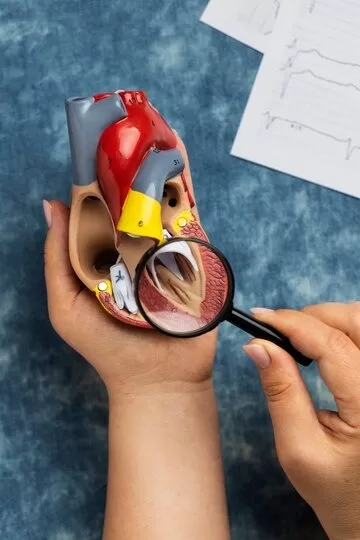Heart disease is indeed a fatal human disease, which is rapidly on the increase world- wide in both developed as well as undeveloped countries causing many deaths.
In heart disease, the heart tends to fail to supply a sufficient amount of blood to other parts of the body in order to accomplish their normal functionalities. Early and on-time diagnosing this health issue is very essential prevent in order to prevent patients from more damage and also to save their lives.
Among the conventional invasive-based techniques, angiography is no doubt considered to be the most well-known technique for diagnosing heart problems but does have few limitations. Non-invasive based methods, such as intelligent learning-based computational techniques are indeed found more upright and also effectual for the heart disease diagnosis.
Heart disease is perilous and life threatening chronic diseases all over the world. In heart disease, normally the heart rather fails to supply sufficient blood to other parts of the body in order to accomplish their normal functionality. Heart failure occurs due to blockage and also narrowing of coronary arteries. Coronary arteries happen to be responsible for the supply of blood to the heart itself. The most common symptoms of heart disease include physical body weakness, shortness of breath, feet swollen, and weariness associated signs, etc. The risk of heart disease may be increased by the lifestyle of a person such as smoking, unhealthy diet, high cholesterol level, high blood pressure, deficiency of exercise and also fitness, etc.
Heart disease is of different types in which coronary artery disease (CAD) is the common one that can lead to chest pain, stroke, and also heart attack. The other types of heart disease does include heart rhythm problems, congestive heart failure, congenital heart disease (birth time heart disease), and also cardiovascular disease (CVD).
Among the conventional methods, angiography is considered to be most precise technique for the identification of heart problems. Conversely, angiography has few drawbacks like high cost, various side effects, and strong technological knowledge. Conventional methods do often lead to imprecise diagnosis and also take more time due to human mistakes. In addition, it is a very expensive and computational intensive approach for the diagnosis of disease and does take time in assessment.
Cardiovascular (CV) disease happens to be the leading mortality cause among women. Psychological assessment might indicate depression or anxiety disorders, which have long-term detrimental effect on CV health.
Monitoring health parameters and using Internet-of-Things (IoT) is no doubt a forming trend for future well-being. IoT sensors are mostly made use of to collect real-time vital signs and also monitor the health parameters of individuals. Collecting, processing, and also analyzing vitals does help predict risk early to tackle the problem. One’s health care provider will examine the person and enquire about personal and family medical history of the patient. Several different tests are conduced to diagnose heart disease. Besides blood tests and a chest X-ray, tests to diagnose heart disease these can include:

1. Electrocardiogram (ECG or EKG). An ECG is a quick and painless test recording the electrical signals in the heart, indicating if heart is beating too fast or too slowly.
2. Holter monitoring. A Holter monitor is rather a portable ECG device that is worn for a day or more to record the heart’s activity during daily activities to detect irregular heartbeats found during a regular ECG exam.
3. Echocardiogram. This is noninvasive examination using sound waves in order to create detailed images of the heart in motion.
4. Exercise tests or stress tests. These tests often involve walking on a treadmill or riding a stationary bike while the heart is monitored.
5. Cardiac catheterization. This test can show blockages in the heart arteries.
6. Heart (cardiac) CT scan. This test collects images of one’s heart and chest.
7. Heart (cardiac) magnetic resonance imaging (MRI) scan. This test provides detailed images of the heart.
Conclusion:
Heart disease is fatal
